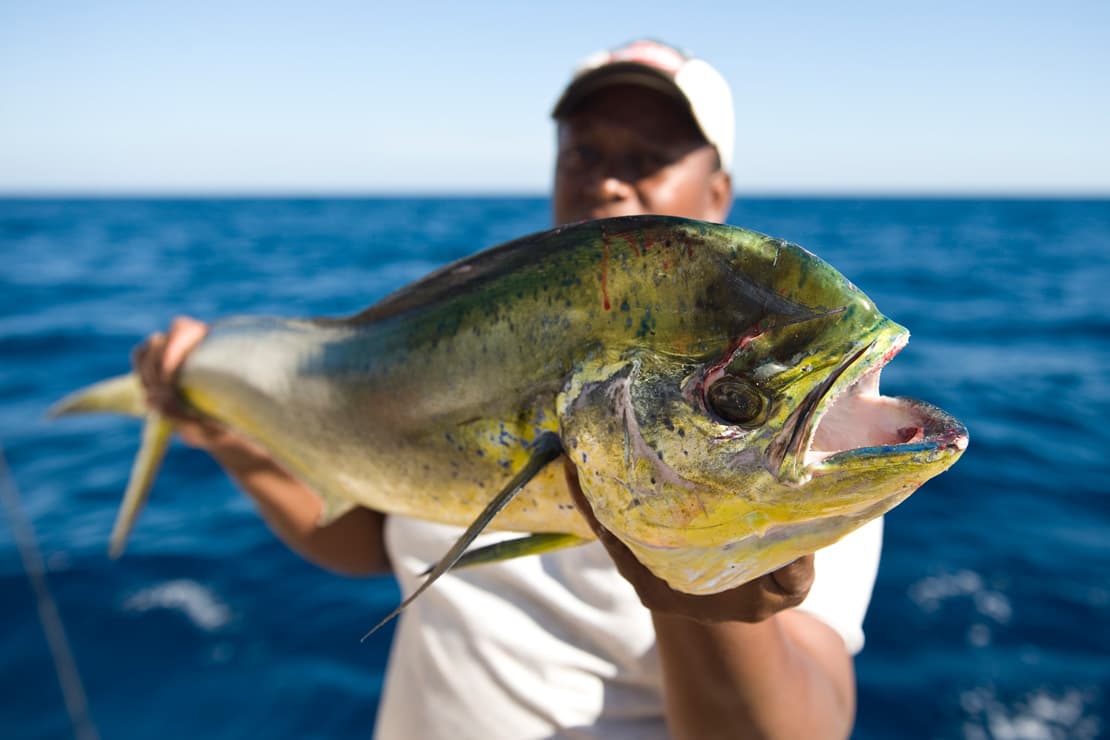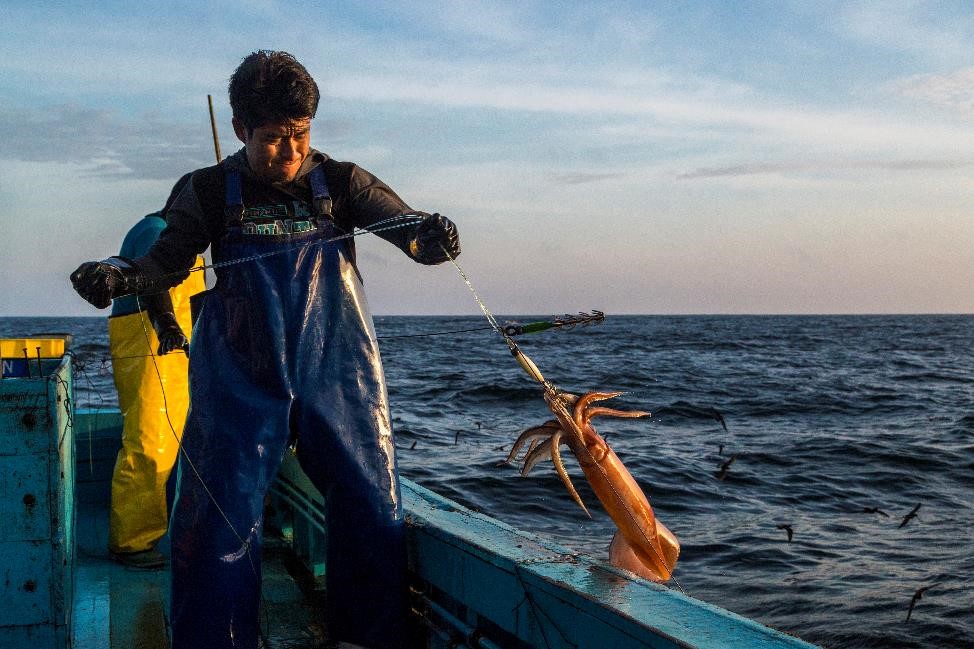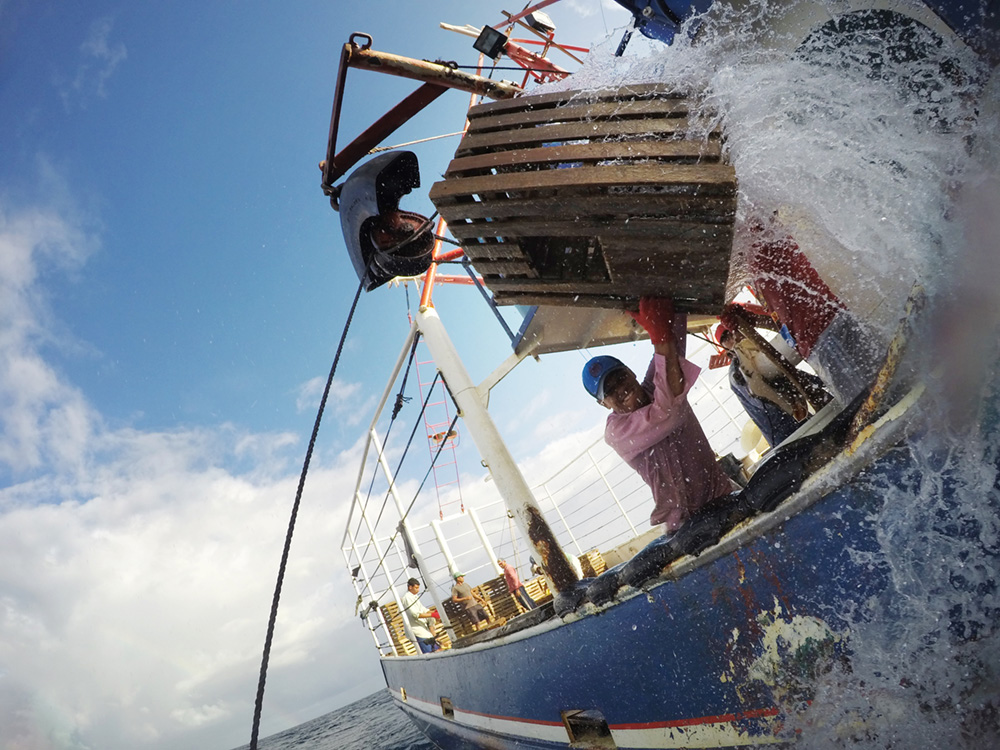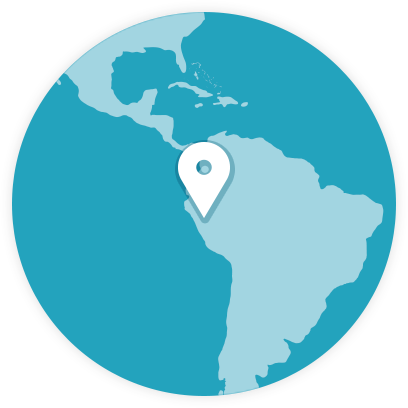Peru Mahi
FIP Stage: 4 (Improvements in Fishing Practices or Fishery Management)
Progress Rating: C (Some Recent Progress)
Start Date: November 2013
Last Updated: September 2023
The Peruvian mahi mahi fishery includes over 4,200 fishermen and is one of the country’s most important artisanal fisheries. Peru is the leading mahi mahi producer worldwide, with over 70% of its exports going to the United States.
Critical issues challenging this fishery include the high number of unlicensed vessels in the fishery, and lack of effective national and international management of mahi mahi, a highly migratory species. The fishery also needs additional data on how fishing interacts with other species including endangered sea turtles and sharks.
The active involvement of FIP Stakeholders, including the Ministry of Production and Peruvian Institute of the Sea, and FIP Participants drives improvements against the Marine Stewardship Council standard.

© Antonio Busiello / WWF-US
WHAT WE ARE DOING
FIP efforts address governance, fishing practices, and environmental impacts of the fishery so that it can meet the MSC standard. This work is steered by FIP Participants and FIP stakeholders and includes:
FIP PARTICIPANTS
We encourage action across the supply chain to support FIP progress. A FIP Participant is an industry member that is part of the seafood supply chain for the FIP product and is actively engaged in supporting the FIP.
How Can I Become a FIP Participant?
A FIP Participant is an industry member that is part of the seafood supply chain for the FIP product (e.g., retailers, food service providers, suppliers, manufacturers, etc.) and is actively engaged in supporting the FIP. WWF-US encourages support of FIP participants, and will acknowledge FIP Participants on our sustainable seafood website and in other communications regarding our FIP work.
To be considered by WWF-US as a FIP Participant the participating entity is expected to follow the WWF-US FIP Participant Policy.
For more information about what a FIP is and how you can play a role, please contact info@nullseafoodsustainability.org.
PROGRESS AND ACTIVITY
The Marine Stewardship Council uses 28 performance indicators to assess the sustainability of fisheries. The chart represents the percentage of indicators that would likely pass, pass with conditions for improvement, or fail upon the fishery’s full assessment.
Peru Mahi Project FIP Status
Initial Assessment
Implementing Improvements
We use a step-wise process to evaluate the fishery’s performance and identify sustainability issues, and then to implement improvements and report results. Want to dive deeper into this FIP’s progress on each of the MSC performance indicators? Visit FisheryProgress.org.
FIP OUTCOMES TO DATE
The fishery has achieved the following impacts through improved practices and management
Engaging Industry to Advance Mahi Mahi Sustainability
US businesses are backing Peru’s mahi mahi fishery in a big way. The Peruvian government recently received a letter from 26 major US-based seafood buyers and importers pledging their support for the Peruvian mahi mahi fishery improvement project and urged officials to actively participate in the advancement of the fishery toward the Marine Stewardship Council standard.

Peruvian Government Cracks Down on Illegal Fishing
Fisheries and farms across the globe support the livelihoods of 59.6 million people who rely on fishing and fishing related activities for income, and about 3.2 billion people who depend on fish as an important part of their diet. But illegal fishing is threatening the food supply of coastal communities as fish populations decline due to overfishing in areas fishers are not permitted to access. Fortunately, in Peru—one of the world’s leading producers of mahi mahi and squid—the government is taking action to clamp down on illegal fishing.
Get Involved
Become a FIP Participant
By signing on to support a FIP you are joining forces with other leaders in the industry that seek to help conserve marine ecosystems, protect livelihoods, and increase the number of sustainable fisheries and the overall supply of sustainable seafood.
 © Antonio Busiello | WWF-US
© Antonio Busiello | WWF-US



